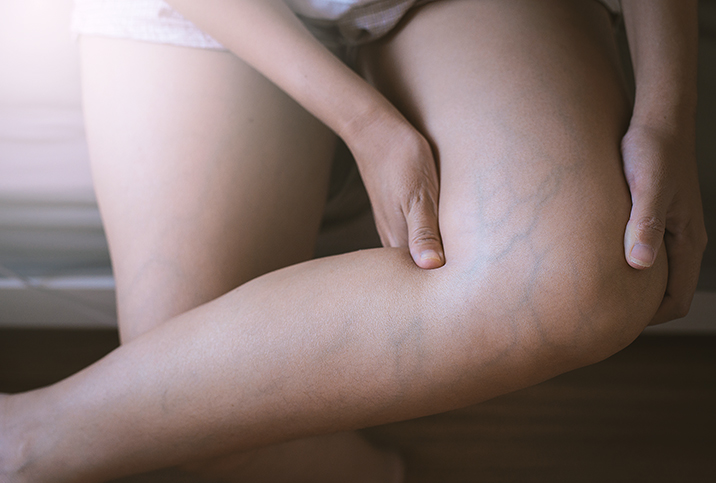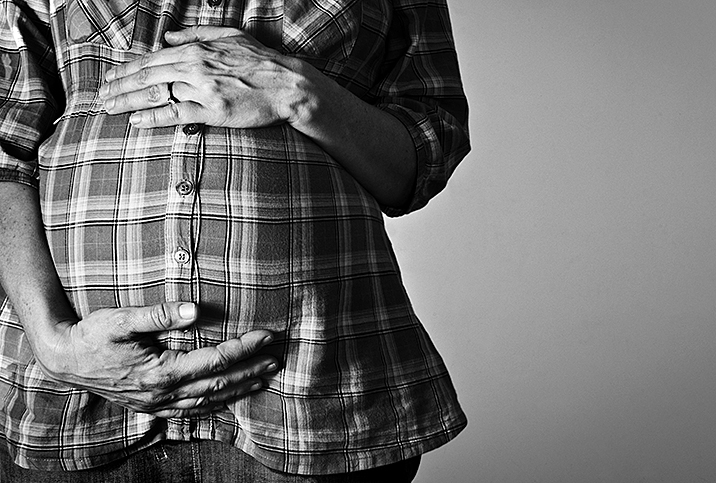Why Do Varicose Veins Appear During Pregnancy?

Perhaps you have noticed leg fatigue, swelling, pain, tingling, cramping or itching. These symptoms, combined with enlarged, dilated veins and bluish coloration visible through the skin, are clear signs of the development of varicose veins.
Varicose veins are prevalent in pregnant patients and caused by deficient blood flow. During pregnancy, the appearance of varicose veins not only depends on a genetic predisposition but also on several transitory changes in the woman's organism that facilitate the increase of the incidence.
About 40 percent of pregnant women may present varicose veins, according to data provided by several studies. Depending on each case, these can be small, spider-like veins or large, painful ones, becoming a mostly aesthetic problem but also causing physical discomfort.
The reasons for varicose veins during pregnancy
"Varicosities are just dilated veins, and they typically occur in the second half of the pregnancy because of the increased pressure in the venous system, in the inferior part of the woman's body, which is from the waist down," said Carlos Szajnert, M.D., an OB-GYN based in Miami.
In addition to the pressure in the venous system, the causes are related to hormonal changes. Specifically, progesterone relaxes the vascular walls and decreases the functionality of the valves, said Kecia Gaither, M.D., board-certified in OB-GYN and maternal-fetal medicine and director of perinatal services/maternal-fetal medicine at NYC Health + Hospitals/Lincoln in the Bronx in New York City.
The increase in blood flow throughout gestation, fluid retention and the mother's weight gain, which is inherent in pregnancy, are all factors contributing to the formation of these veins as well.
"Additionally, the weight of the growing fetus increases one's susceptibility to varicosities," Gaither added.
What can you expect from varicose veins?
Varicose veins are usually more common in the legs, but during pregnancy, they are prevalent in other areas of the body, too.
"They usually appear in the rectus or the anus, which are called hemorrhoids; in the vaginal labia, which are called vulvar varicosities; and in the legs/thighs," Szajnert said.
In most cases, varicose veins in pregnancy are usually not serious and improve with time, however, it is important to mention to your doctor if you have problems with varicose veins, especially if you have a lot of discomfort.
Treatments recommended by specialists
"Treatment during pregnancy is limited to conservative management, including use of graduated compression stockings, leg elevation, exercise and weight management," said Vinay Madan, M.D., a board-certified vascular and interventional radiologist, and medical director of Center for Varicose Veins in Connecticut.
Szajnert mentioned some of the treatments to follow, according to the specific symptoms you present:
- For varicosities in the lower extremities: Compression stockings are one of the most popular treatments for varicose veins and can be very helpful in some cases. Another effective tip is to elevate the legs with pillows when the patient is resting or lying down.
- For hemorrhoids: "We usually recommend creams that contain anti-inflammatory medication and topical anesthesia, sitz baths and oral analgesics," Szajnert said.
- For vulvar varicosities: Although these varicosities usually don't cause symptoms, the same creams used to treat hemorrhoids may help with any discomfort, too.
"Unfortunately, there is nothing that can be done to prevent varicosities during pregnancy," Szajnert said.
However, there are certain measures to prevent them from getting worse:
- Wear comfortable shoes
- Don't sit cross-legged
- Do moderate physical activity
- Take vitamins
- Avoid foods high in sodium
- Do not wear tight-fitting clothes
- Take frequent breaks
- Keep your legs elevated
- Eat foods rich in fiber
- Do not lift weights
- Sleep on your left side
- Avoid standing for long periods of time
- Gain the body weight recommended by your OB-GYN
What happens after childbirth?
"Varicose veins may start during pregnancy and progressively worsen with every following pregnancy," Madan explained.
Varicose veins often decrease in size a few months after childbirth, although with each pregnancy, they are less likely to disappear completely.
Many of the uncomfortable symptoms of varicose veins during pregnancy, such as leg pain, itching, swelling and cramping, often improve following childbirth. But the experience can mark the beginning of chronic venous insufficiency for some people, Madan explained.
"For patients who continue to have symptoms after pregnancy, or are considering cosmetic treatments due to the unsightly appearance of spider and varicose veins, [they] can consider additional treatment options including radiofrequency ablation and sclerotherapy," Madan said.
What risks are associated with varicose veins?
Even though varicose veins tend to be harmless, in rare cases some patients may develop complications.
"Potential severe complications of varicose veins during pregnancy include superficial thrombophlebitis and, less likely, deep venous thrombosis," Madan said.
Certain symptoms are cause for concern—and a sign you should see a specialist.
"Pain, redness, touch sensitivity, swollen leg can point to a deep venous thrombosis, a blood clot in the vessel, which is a life-threatening condition," Gaither said.
"Women who develop varicose veins during pregnancy should be evaluated by a vein specialist," Madan recommended.
By seeing a specialist, the patient can be guided toward certain measures to minimize symptoms and monitored so they can avoid possible complications of varicose veins.


















